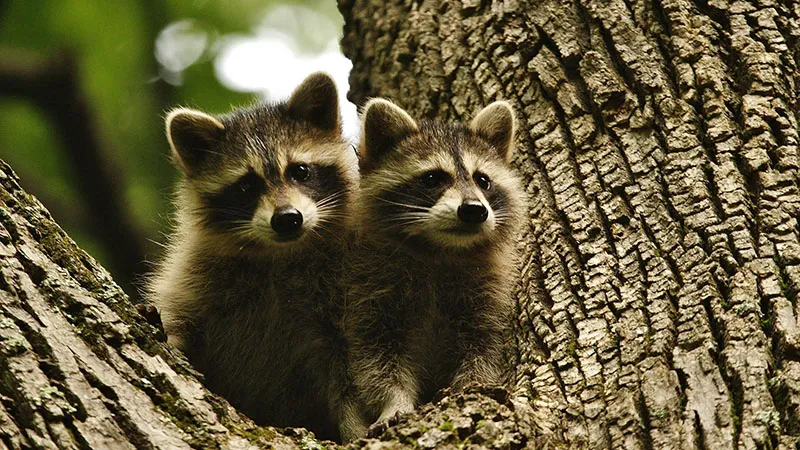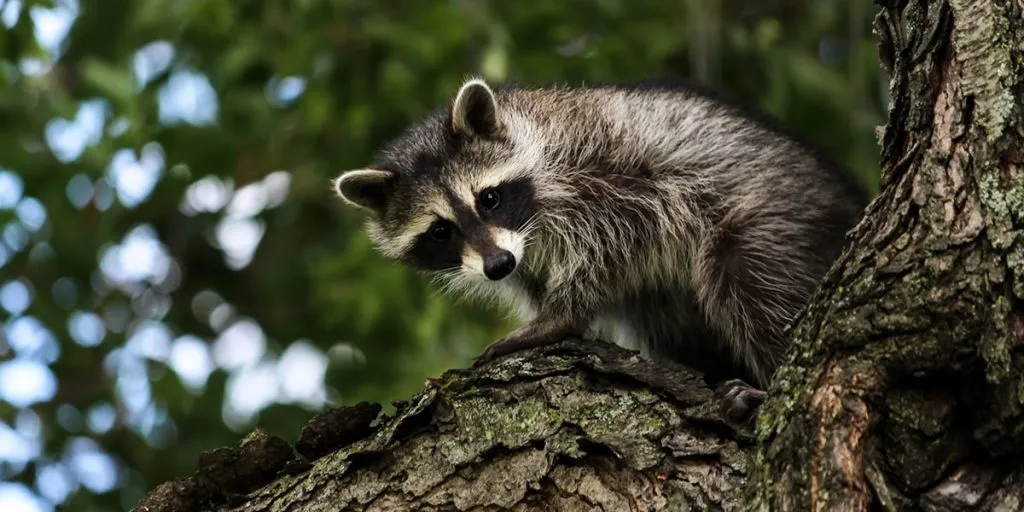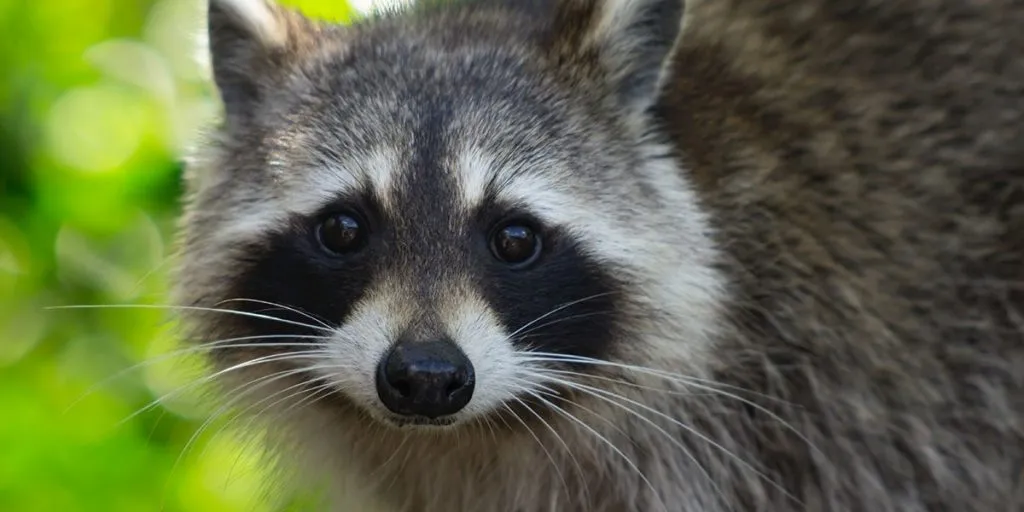Local wildlife is filled with precious moments. Picture the baby raccoon: a helpless, fuzzy ball crawling around the nest, making squealing noises while looking for its mom. Those newborn raccoons are so darn cute, it’s off the charts!
There are so many interesting facts and pieces of wisdom to share about the infamous trash panda baby. That’s why I decided to create this overview for you. A fun and interesting introduction to a very special mammal species: the raccoon.
1. Baby Raccoons Are Called Kits
Did you know that a baby raccoon is called a kit? It shares this ‘baby name’ with a number of other commonly found wild animals, such as these:
- Badgers
- Ferrets
- Foxes
- Skunks
- Weasels
- And many more!
One baby raccoon is a ‘kit’, the plural being ‘kits’ (not ‘kittens’). A group of ‘kits’ together is called a ‘litter’. Very similar to the words used with cats, but with very small distinctions.
2. A Baby Raccoon Makes Cute Sounds
A newborn baby raccoon will make noises like chittering, purring, and squealing. They develop their sounds while still in the nest. A chittering kit kind of sounds like a nest of birds. When they are hungry, they make a noise similar to a high-pitched chirp.
If you play the YouTube video below with sound turned on, you’ll get a better idea of the sounds the youngsters make in their early existence:
3. Don’t Pet A Wild Baby Raccoon
While they might look cute and cuddly on the outside, don’t forget that you’re still dealing with a wild animal. Don’t try to touch a baby raccoon, unless it is a pet that’s used to being handled by humans.
It will try to bite you, scratch you, and might infect you in the process (they can be born with the dangerous rabies virus). That’s probably not the souvenir you’ve been waiting for.
So make sure to admire wild kits from a distance instead. If they’re interested in coming to you, they will do so of their own free will.
4. Kits Don’t Have The Infamous Mask Yet
Newborn kits still need to develop the characteristic ‘bandit mask’. That’s what people call the dark band around their eyes! The markings are sometimes also referred to as ninja masks, or even superhero masks.
It takes up to 10 weeks for the newborn kit the fully start developing its ‘adult’ fur.
The animals are not born completely without hair, but the little hair they have at birth won’t be enough to show off that mischievous bandit vibe. The image below shows you exactly what’s meant by ‘bandit mask’:
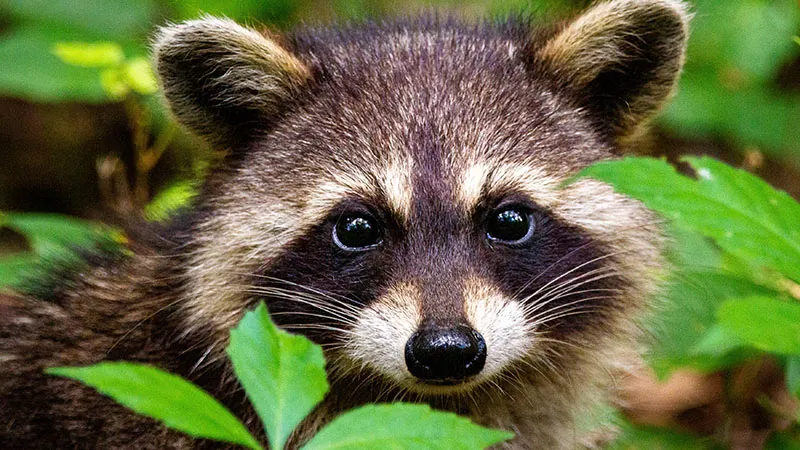
5. They Can Bond With Many Animals
Did you know that raccoons create strong social bonds with their caretaker? That doesn’t just need to be their real mom, but it can also be a human or any other animal.
Not only will a mother raccoon happily adopt babies from another litter (at least, in most cases), raccoon kits are also happy to see other species as a pet.
Obvious examples are humans, dogs, but also cats. Caring adopting parents, human or otherwise, will all happily take in a raccoon if given the opportunity. And the kits will bond with them like they’re their mom!
6. Litters Walk In Formation Behind Mom
A litter of kits can show a surprising similarity to a brood of ducklings. Ever seen baby ducks waddle behind their mother in a straight line? That’s exactly what a litter of raccoons will do when they are old enough.
It’s probably one of the most adorable sights you can encounter, and it’s quite rare to encounter in the (sub)urban environment. Hopefully, they don’t accidentally step on each other’s tails.
7. Youngsters Still Lack Coordination
Much like a human toddler, a small raccoon will struggle to walk or climb at first. They will wobble, be awkward and clumsy in their movement, but eventually get better at it.
Since the babies can also be quite naughty and mischievous, the situation quickly devolves into a mixture of drunken-baby-cuteness, exactly like the YouTube story below describes with passion:
8. Kits Develop Extremely Sensitive Paws
The paws of a raccoon are extremely interesting, and develop their characteristics mostly after the birth of the animals. Take for instance the fact that raccoons grow whiskers between their fingers for extra sensitivity (especially useful at night).
Their whiskers start growing when the litter begins to leave the nest with mom to forage and hunt for food.
But that’s not the only thing sensitive about the paws: the soft pads on a raccoon paw are just as sensitive as the tip of our human fingers. Try and touch the and experience what a raccoon might feel!
9. They’re Highly Intelligent From A Young Age
Did you know that a newborn raccoon is already a little Einstein in disguise? While they’re still mostly dependent on their mom inside the nest, the development of the animals is remarkably fast.
Their social, playful behavior quickly shows how clever the little rascals can be.
Not only will they outsmart their siblings in some play-fighting, but they will also out-compete each other for the scarce available food, and quickly develop their hunting skills when outside of the den with mom. A long way away from where newborns start out!
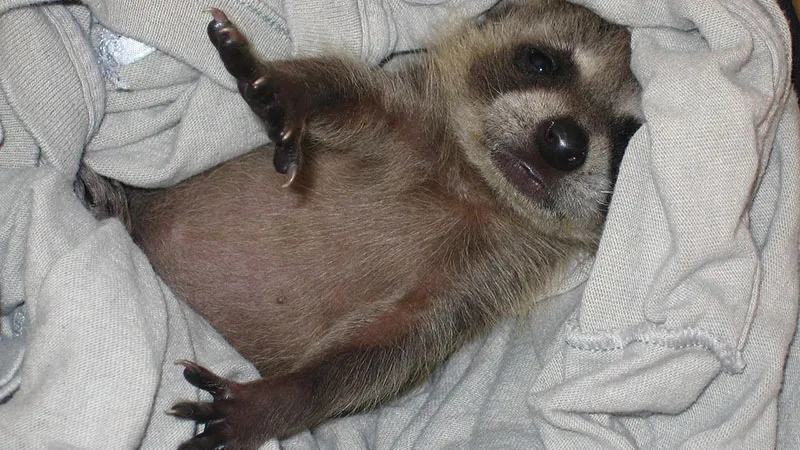
10. Newborn Raccoons Can’t See Or Hear
On the first day of their lives, kits are completely helpless. Their eyes haven’t opened yet, but they’re also completely deaf. This means that it’s up to the mother raccoon to keep her litter alive at all costs.
After about 3 weeks, a baby raccoon will start to open its eyes for the first time. They are still immobile at this time though. It will take a total of 3 months for the animals to completely develop and start leaving the nest.
11. Creatures Of The Day, Not The Night
While adult raccoons are nocturnal animals, newborns definitely are not (yet). A litter can be more active during the day than at night. You’ll especially notice this when you’re dealing with a nest hidden somewhere inside the house.
Kits can be very loud, so it’s probably a good thing that they choose to be awake during the day instead.
As they grow into adults, their sleep schedule shifts towards the nightlife. That’s mainly because it hides them better from predators out in the open, and gives them more opportunities to scavenge and/or hunt for food.
12. Clinging To Mom For Dear Life
Raccoon babies are fully dependent on their mom for several months. After birth, the kits exclusively drink mother’s milk for 8 to 9 weeks. Then they switch to a diet of solid foods, but keep drinking the milk of the mother raccoon until they are 4 months old.
That’s not even the moment they are ready to leave the nest and let their mom go.
It can take up to 10 months before a litter and their mom completely go their own way. To compare thair to their average lifespan, they spend about a third of their whole lives in the wild with their caretaker parent.
13. Young Males Will Team Up
While most young males are solitary after getting out of the nest, some of the male siblings will form groups. This tends to happen the most in urban settings, where food is a bit easier to find. They have multiple reasons for doing this:
- It increases the odds of fighting off predators;
- Any intruding males will have a hard time entering the territory, this will usually happen during their first mating season;
- Hunting for prey is easier in groups;
- Sharing dens and warming each other up is especially efficient in winter time.
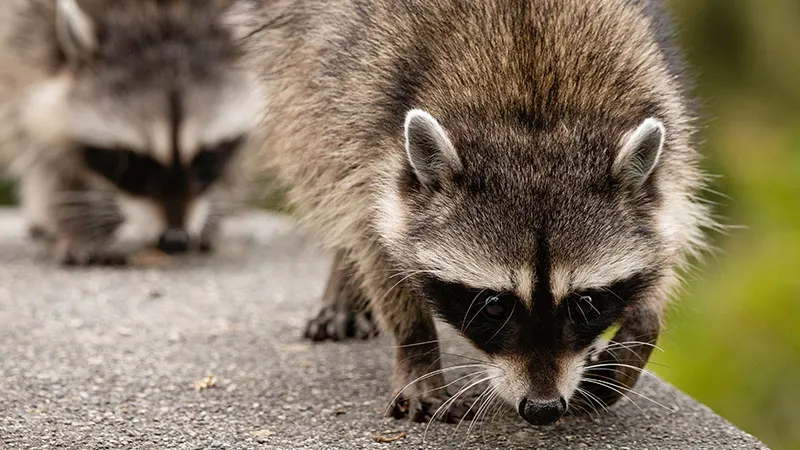
14. Females Grow Faster
The female part of the litter will grow up significantly faster than their brothers, who need a little more time in the nest. The girls need this advantage for their first litter. In the next mating season, the females will already produce offspring.
It takes a lot of energy to grow a full litter of baby raccoons in your belly, so it’s good that the girls grow up so fast.
While the boys are a bit slower, we just learned that they do grow bigger than their sisters. So it’s basically a trade-off to ensure the biggest number of family members survive into the next breeding season!
15. Their Teeth Start Growing Relatively Late
Did you know a raccoon has a total of 40 teeth? Raccoon teeth only start to develop relatively late, at around 6-8 weeks of age. This coincides with the moment a baby raccoon is big enough to leave the nest.
Those teeth are the signal for the mom to start venturing out her nest again.
You can imagine that feeding a baby raccoon milk is fine up until the moment the teeth start coming in. This is when the biting starts to hurt, and when the mom realizes her offspring is now all grown up and ready for the real world.
16. Trash Pandas From The Start
Once their teeth are fully formed, they don’t just sit there doing nothing. They are meant to eat anything and everything, because a raccoon is a true opportunist! That means dumpster diving, hunting, scavenging, and stealing from the vegetable garden.
Even before a baby fully leaves the nest, the mom goes on little hunting trips with her offspring.
That means you’re able to find a litter with the mom out in the open looking for food. Especially when it gets dark at night, or in the morning when the sun is about to rise again. So make sure to properly lock up your bin bags, otherwise, you’ll never get rid of those pesky trash pandas again!
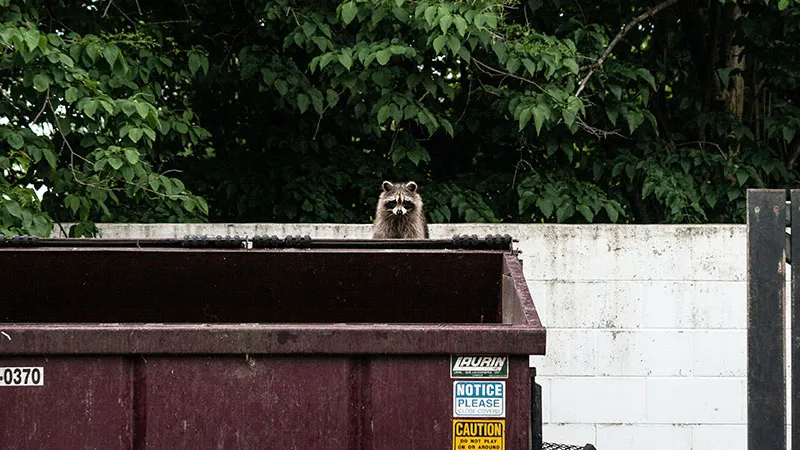
17. Kits Are Highly Curious Climbers
For a baby, going outside the nest is a big adventure. We know they’re dependent on their parent for support, so it’s usually the mom who ends up encouraging the little ones to climb.
That might be scary at first, but their pawas were made for it. So they start climbing from as young as 8 weeks old.
Did you know that most raccoons are able to climb down a tree head first? That’s something a kit won’t quickly do on the first try, but it definitely will be easy for it once it got some experience in the art-form that is climbing up and down.
18. The Litter Always Comes Back
Female raccoons grow up the fastest, but they also come back to their birthplace every year to give birth to a new litter. We talked about this topic more thoroughly in this article about raccoons staying in one place.
It is exactly for this reason that raccoons are considered a pest by many!
Raccoons often return to their birthplace to ‘spawn a new litter of raccoon babies’, so to speak. The animals have a great memory and will definitely return to their familiar dens. As a homeowner, you therefore definitely don’t want a raccoon litter to be born on your property.
19. Males Are Heavier Than Females
Newborn kits are small and fragile, but they quickly grow into agile and flexible mammals. We already learned that females gain size (and weight) a lot faster than males. But that doesn’t mean it stays that way.
An adult male raccoon would be considered a ‘chonky boy’ compared to a female of the same age.
While they aren’t comically round like the zoo animal in the image below, they will be noticeably larger than their female counterparts once they are fully grown. This is needed for their survival and reproduction, and will of course vary depending on the individual.
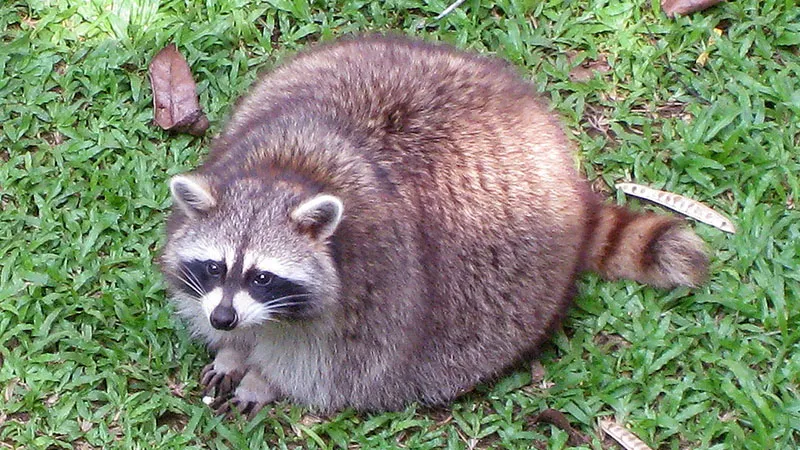
20. Baby Raccoons Are Born With Fur
You might have thought a newborn kit is completely naked. But that’s actually not true: the animals already have hair all over their bodies the moment they are born. Admittedly, it’s not a lot yet (their characteristic masked face isn’t visible yet), but will grow out over time.
Did you know raccoon fur can have different colors based on habitat or genes? They don’t all look the same!
On very rare occasions, an albino raccoon is born in the wild. Their unique white fur is so rare, that it might only happen in 1 of every 10,000 births. Have you ever seen a white version of an animal? They exist across almost all species, and albinism even exists in some humans.
21. Kits Thrive In The Wild, Hard To Raise As Pets
Whatever you learned about baby raccoons in this overview, always remember that a cute little raccoon always remains a wild animal. They should be left alone where possible, even if you feel the urge to pet them or interact with them in other ways.
The curious and social nature of the raccoon makes it so raccoons are often kept as pets, even in the USA.
Pet baby raccoons are extremely cute, curious, and mischievous. They are adorable in every way, but they belong in nature. Once they grow up, it is very difficult to keep a raccoon in check. The animals can become bored or frustrated, resulting in aggressive or other unhealthy behavior. So think twice before you adopt one, even if it might be legal in some US states!

